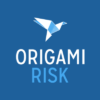CLOSED EXCHANGE on “Risk appetite , making it relevant to the Board”
On March 2, 2016 Paul Hopkin from the IRM challenged about 30 risk managers from different horizons, about Risk Appetite and its implications at Wolters Kluwer’s premises in Mechelen.
Through a broad and lively discussion Paul Hopkin helped us to make the components to come to define risk appetite ours and to make it relevant, at least for us.
We discussed the different risk elements by interacting and helping to define the risk appetite of an organisation.
Risk capacity, risk limit, risk exposure, are key elements needed to this end.
The definition of risk capacity is based on risk exposure as an estimate of the potential loss based on the current prospective risk limits and risk positions.
We learned about how to set the “risk exposure ceiling”, establishing risk appetite by setting an upper limit on aggregate risk exposure.
Complexity, measurability, differentiation according to risk capability, capacity and maturity of the organization are underpinning risk appetite.
Other elements such as differing views on strategic, tactical and operational level and the control culture of the organisation have their impact on how risk appetite is defined within the concerned organisation.
A lot is devolved to the Board, with the help of RM, e.g. identifying risk management processes, principal risks and risk appetite, risk culture and risk assurance, risk profile and risk mitigation, monitoring, reviewing, communicating and reporting risks.
In brief, depending on these factors, risk appetite can be very different from one organisation to another.
For the Risk Manager, apart from his operational function, this means a lot of necessary interaction with the Board based on the above elements.
By Michelle DE VLIEGER






